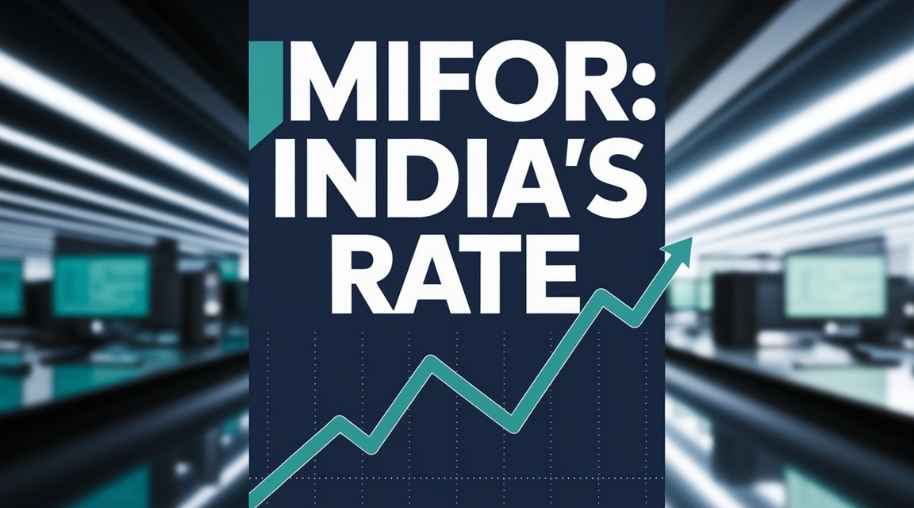MIFOR Full Form-Mumbai Inter Bank Forward Offered Rate
by Shashi Gaherwar
0 2396
Mumbai Inter-Bank Forward Offered Rate (MIFOR): Importance, Calculation, and Market Impact
The Mumbai Inter-Bank Forward Offered Rate (MIFOR) was a critical interest rate benchmark in India’s financial markets, used for pricing foreign exchange derivatives, interest rate swaps, and forward rate agreements. It played a significant role in enabling banks, financial institutions, and corporations to hedge currency risks and manage interest rate exposures. Although discontinued as a significant benchmark in 2023, its historical importance and transition to alternative rates remain relevant.
This article explores MIFOR’s definition, calculation, applications, and its impact on the Indian financial system, along with its transition due to the global phase-out of LIBOR.

What is Mumbai Inter-Bank Forward Offered Rate (MIFOR)?
MIFOR was a benchmark rate combining two key components:
- London Inter-Bank Offered Rate (LIBOR): The benchmark interest rate at which banks lent to each other in international markets.
- Forward Premium: The additional cost or discount associated with converting US dollars to Indian rupees at a future date.
MIFOR was primarily used to determine the cost of foreign exchange swaps and interest rate derivatives in India. Its linkage to LIBOR aligned Indian financial institutions with global interest rate movements.
[](https://www.codingtag.com/mifor-full-form-mumbai-inter-bank-forward-offered-rate)Calculation of MIFOR
MIFOR was calculated daily by Financial Benchmarks India Private Limited (FBIL) until June 30, 2023, based on:
- The USD LIBOR rate for different tenures (ranging from overnight to 1 year).
- The forward premium for the USD/INR currency pair, reflecting market expectations of rupee depreciation or appreciation.
The formula for MIFOR was:
MIFOR = LIBOR (USD) + Forward Premium (USD/INR)
For example, if the 6-month USD LIBOR was 5% per annum and the 6-month forward premium was 3%, then the 6-month MIFOR would be:
MIFOR (6 months) = 5% + 3% = 8% per annum
While the Reserve Bank of India (RBI) did not directly regulate MIFOR, it was widely used by Indian banks and financial institutions for pricing derivatives and interest rate swaps.
[](https://www.codingtag.com/mifor-full-form-mumbai-inter-bank-forward-offered-rate)Applications of MIFOR
- Pricing of Interest Rate Swaps (IRS):
- MIFOR served as a reference rate for interest rate swaps, where parties exchanged fixed interest payments for floating-rate payments linked to MIFOR.
- This helped manage interest rate risks in volatile markets.
- Forex and Currency Hedging:
- Indian companies in international trade used MIFOR-linked derivatives to hedge foreign exchange rate fluctuations.
- Banks used MIFOR-based products to protect against currency depreciation risks.
- Forward Rate Agreements (FRA):
- MIFOR was a key benchmark for Forward Rate Agreements, enabling businesses to lock in future interest rates.
- This ensured stability in loan repayments and international transactions.
- Benchmark for Financial Products:
- Financial instruments like floating rate loans, derivatives, and structured finance products were often tied to MIFOR.
- It served as an indicator for setting lending and borrowing rates.
Advantages of MIFOR
- Alignment with Global Interest Rates: By incorporating USD LIBOR, MIFOR aligned Indian interest rates with international market conditions.
- Efficient Risk Management: Enabled businesses and financial institutions to hedge against currency volatility and interest rate fluctuations.
- Better Price Discovery: Provided a transparent and market-driven reference rate for pricing interest rate derivatives and foreign exchange contracts.
- Enhanced Liquidity in the Derivatives Market: A robust MIFOR benchmark encouraged participation in interest rate swaps and forex derivatives, improving market liquidity.
Challenges and Limitations of MIFOR
- Dependence on LIBOR: MIFOR’s reliance on USD LIBOR made it sensitive to global interest rate changes, impacting India’s financial markets. The LIBOR phase-out necessitated a transition to alternative benchmarks. [](https://www.codingtag.com/mifor-full-form-mumbai-inter-bank-forward-offered-rate)
- Volatility in Forward Premiums: The USD/INR forward premium fluctuated due to market demand, RBI interventions, and macroeconomic conditions, making MIFOR volatile.
- Regulatory Uncertainty: Unlike benchmarks like MCLR, MIFOR was not directly regulated by the RBI, raising concerns about transparency and potential market manipulation. [](https://www.codingtag.com/mifor-full-form-mumbai-inter-bank-forward-offered-rate)
- Speculative Misuse: Originally intended for hedging, MIFOR was used by some corporates for currency speculation, prompting RBI restrictions in 2005, later relaxed for interbank transactions. [](https://economictimes.indiatimes.com/mifor-allowed-for-inter-bank-deals/articleshow/1126005.cms?from=mdr)
Market Impact of MIFOR
MIFOR significantly influenced India’s financial ecosystem:
- Derivatives Market Growth: MIFOR facilitated the expansion of India’s derivatives market by providing a reliable benchmark for interest rate swaps and forex derivatives, enhancing market depth.
- Global Integration: By linking to LIBOR, MIFOR integrated Indian financial markets with global markets, enabling better risk management for cross-border transactions.
- Corporate Financing: Companies used MIFOR-linked products to manage borrowing costs and currency risks, supporting international trade and investment.
- Monetary Policy Transmission: MIFOR indirectly influenced RBI’s monetary policy by reflecting global interest rate trends and currency market dynamics.
The Future of MIFOR
With the global phase-out of LIBOR, MIFOR ceased to be recognized as a significant benchmark after June 30, 2023, due to its reliance on USD LIBOR. The RBI directed banks to transition to alternative rates by July 1, 2023. Key developments include:
[](https://www.taxmann.com/post/blog/rbi-decides-to-discontinue-mumbai-interbank-forward-outright-rate-as-a-significant-benchmark/)- Transition to SOFR (Secured Overnight Financing Rate): SOFR, a transaction-based rate, is replacing LIBOR. The Modified MIFOR (MMIFOR), incorporating SOFR, is used for legacy contracts. [](https://www.drishtiias.com/daily-updates/daily-news-analysis/london-interbank-offered-rate-libor)
- Development of Domestic Benchmarks: The RBI is exploring domestic risk-free rates to reduce reliance on international benchmarks, enhancing financial sovereignty.
- Enhanced Regulatory Oversight: The RBI and FBIL are introducing measures to ensure transparency and stability in benchmark-linked transactions. [](https://www.codingtag.com/mifor-full-form-mumbai-inter-bank-forward-offered-rate)
- Legacy Contract Management: Banks are inserting fallback provisions in contracts referencing MIFOR to ensure a smooth transition to alternative rates. [](https://www.taxmann.com/post/blog/rbi-decides-to-discontinue-mumbai-interbank-forward-outright-rate-as-a-significant-benchmark/)
The Mumbai Inter-Bank Forward Offered Rate (MIFOR) was a vital benchmark in India’s financial markets, forex trading, and interest rate derivatives. Its alignment with global interest rates and role in risk management made it indispensable. However, the LIBOR phase-out and RBI’s regulatory actions have shifted focus to alternatives like SOFR and MMIFOR. Indian regulators and financial institutions must ensure a seamless transition to maintain stability and efficiency in the interest rate markets.
[](https://www.taxmann.com/post/blog/rbi-decides-to-discontinue-mumbai-interbank-forward-outright-rate-as-a-significant-benchmark/)Further Learning Resources
For insights into financial markets and blogging, explore this guide at Coding Tag – How to Start a Successful Blog.
For UPSC exam preparation, visit www.iasmania.com for tailored resources and current affairs notes.

Share:








Comments
Waiting for your comments